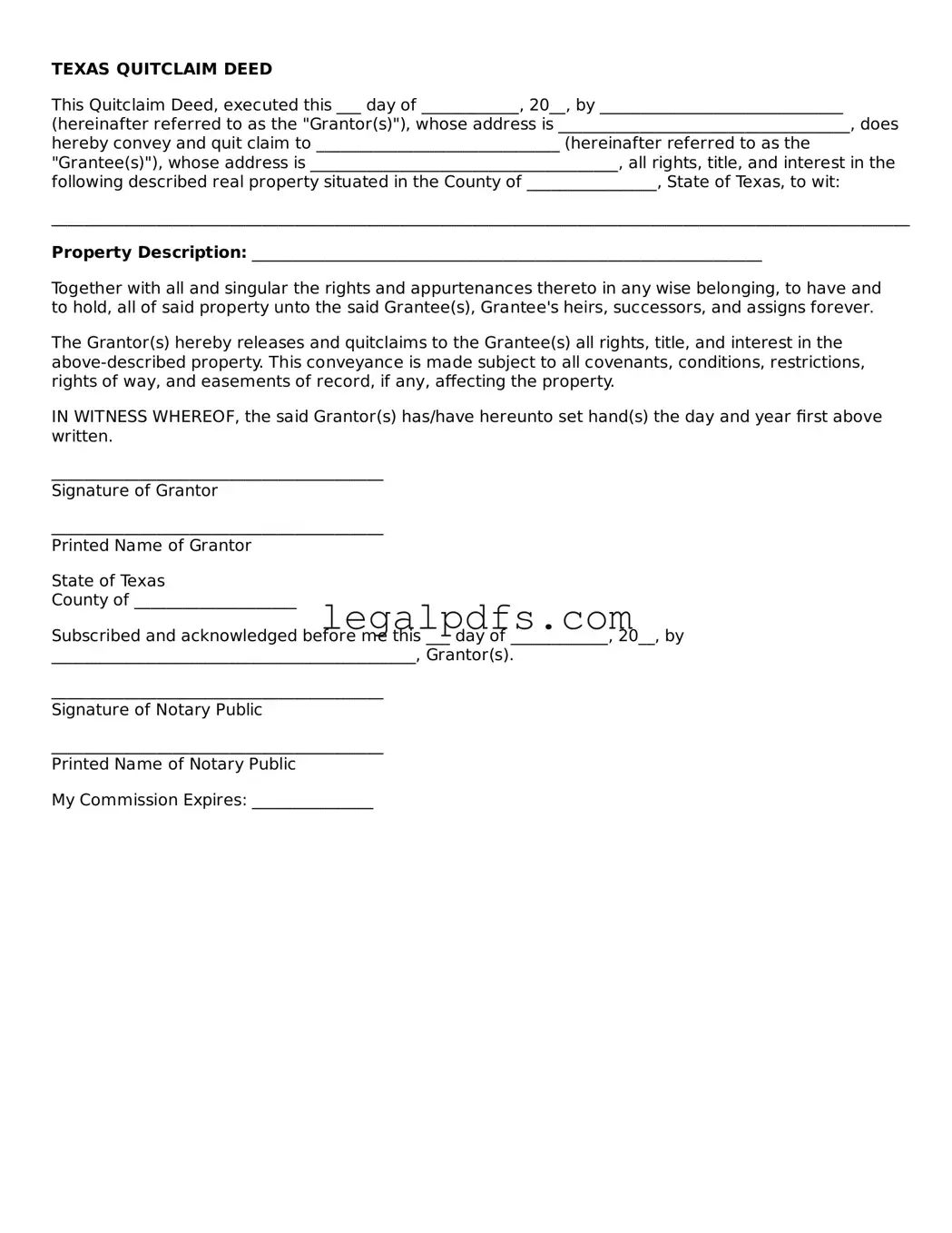TEXAS QUITCLAIM DEED
This Quitclaim Deed, executed this ___ day of ____________, 20__, by ______________________________ (hereinafter referred to as the "Grantor(s)"), whose address is ____________________________________, does hereby convey and quit claim to ______________________________ (hereinafter referred to as the "Grantee(s)"), whose address is ______________________________________, all rights, title, and interest in the following described real property situated in the County of ________________, State of Texas, to wit:
__________________________________________________________________________________________________________
Property Description: _______________________________________________________________
Together with all and singular the rights and appurtenances thereto in any wise belonging, to have and to hold, all of said property unto the said Grantee(s), Grantee's heirs, successors, and assigns forever.
The Grantor(s) hereby releases and quitclaims to the Grantee(s) all rights, title, and interest in the above-described property. This conveyance is made subject to all covenants, conditions, restrictions, rights of way, and easements of record, if any, affecting the property.
IN WITNESS WHEREOF, the said Grantor(s) has/have hereunto set hand(s) the day and year first above written.
_________________________________________
Signature of Grantor
_________________________________________
Printed Name of Grantor
State of Texas
County of ____________________
Subscribed and acknowledged before me this ___ day of ____________, 20__, by _____________________________________________, Grantor(s).
_________________________________________
Signature of Notary Public
_________________________________________
Printed Name of Notary Public
My Commission Expires: _______________
